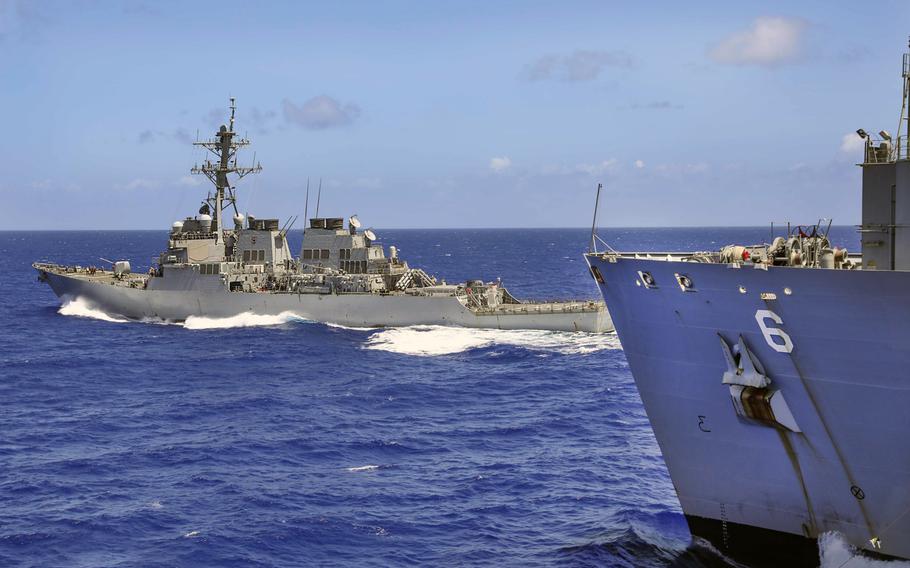
The destroyer USS John S. McCain breaks away from the dry cargo and ammunition ship USNS Amelia Earhart after a replenishment-at-sea in the Philippine Sea, March 26, 2021. Navy combat readiness has fallen in recent years due partly to limited maintenance capacity, a Government Accountability Office report found. (U.S. Navy)
Two decades of conflicts have degraded the military’s ability to fight in the air and at sea while ground forces have experienced a boost in their ability to carry out missions, a government watchdog agency report said.
The Navy was especially hard hit, seeing declines in availability of resources and ship maintenance backlogs, the Government Accountability Office said in a report released Wednesday.
“The Navy cited limited maintenance capacity at private and public shipyards as the primary challenge for recovering ship and submarine readiness,” the GAO said in an analysis of military capabilities between 2017 and 2019.
The GAO broke down “readiness” into two categories — resources and capability. While resources focused on availability of personnel and equipment, capabilities assessed whether a service could carry out its assigned missions. Operations at sea experienced declines in both areas, the GAO found.
Meanwhile, all other military domains — ground, air, space and cyber — got a boost in resources. But that only translated into increased capability to carry out missions for ground units, the GAO said.
In the air domain, services reported numerous challenges, including the effects of 2018’s Hurricane Michael, which damaged bases and put limits on the use of the Air Force’s F-22 fighter jets.
Pilot shortages also hindered operations for the Army’s AH-64 Apache attack helicopters and the Marine Corps’ readiness was compromised by limited depot repair capacity for light attack helicopters, the GAO said.
Overall, continuous conflict has “degraded U.S. military readiness — the forces’ ability to fight and meet the demands of their assigned missions,” the GAO said.
In recent years, the Pentagon has sought to shift focus from counterterrorism to capabilities needed to counter military advances by Russia and China. But the Pentagon’s 2018 National Defense Strategy acknowledged the challenge it faces in adapting because a “backlog of deferred readiness, procurement, and modernization requirements has grown in the last decade and a half and can no longer be ignored.”
The public version of the GAO report offered few examples on how the military’s operations have been hampered. Most of the analysis is classified.
The GAO, which was tasked by Congress to monitor the military’s ability to carry out missions through 2022, says the Pentagon has now put in place a plan to “recover readiness.”
“To maintain the U.S. military’s advantage across all domains in a new security environment characterized by great-power competition, DOD is working to rebuild and restore readiness while also modernizing its forces,” the GAO said.
vandiver.john@stripes.com Twitter: @john_vandiver